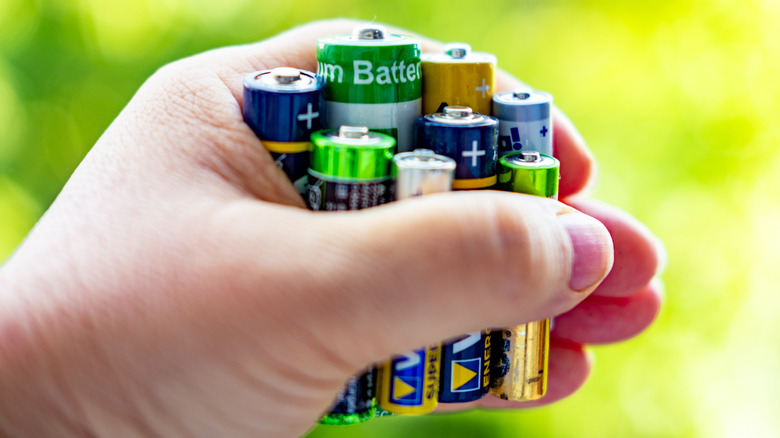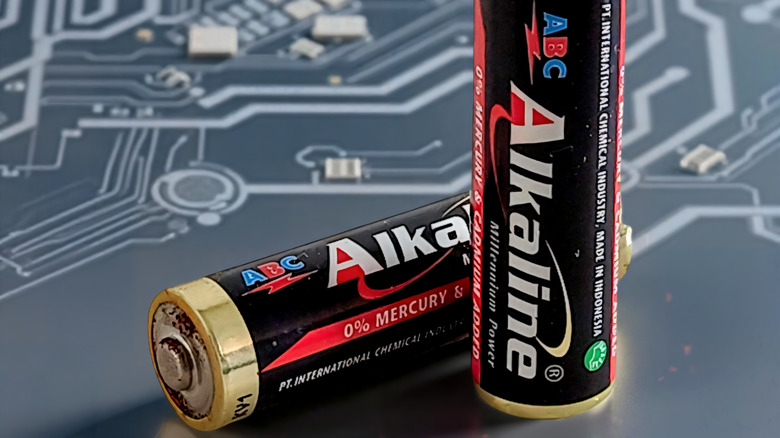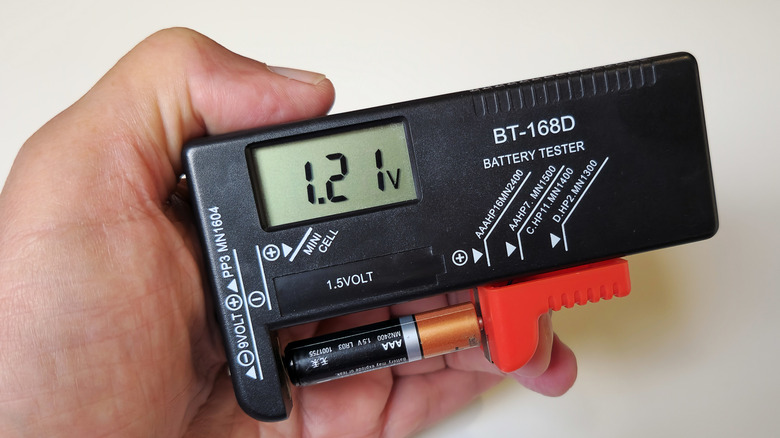Do Batteries Really Bounce When They're Dead?
We may receive a commission on purchases made from links.
If you're like most people, chances are you keep a stash of single-use alkaline batteries at home, too. After all, they might seem mundane, but they're one of the most common and useful things around the house. You'll find them in your TV remote, flashlight, wall clock, and even electric toothbrush, to name a few.
The thing with having tons of disposable batteries, though, is that it's easy to mix the good ones with the bad ones. You probably just toss every battery into your junk drawer, planning to test them later, but then forget. And when you finally want to recycle your bad batteries, you end up having to test dozens of fresh and old ones.
To speed up the process, you might have come across the so-called battery bounce test. They say it's one of the quickest ways to tell if your battery is dead — you just drop a battery and see if it bounces. But is there any truth to this test?
Well, yes and no. Yes, batteries technically bounce when they're dead. But no, not all bouncing batteries are actually dead — some are still good for a couple of uses.
The truth behind the battery bounce test
According to the battery bounce test, if you drop an alkaline battery like a regular AA or AAA on its flat end and it bounces, that means it's already dead and up for disposal. If it just flops down without a very noticeable bounce, it's likely still fresh. This might seem like a superstitious way to test your household batteries, but it's actually backed by science. There is a catch, though — it really isn't 100% reliable for identifying empty batteries, as some online sources might claim.
The battery bounce test has a lot to do with the composition of single-use alkaline batteries, whether that's from cheap or expensive battery brands. This type of battery is made partly of zinc. As you use the battery, the zinc transforms into zinc oxide, which is particularly known for making golf balls springy. The longer you use the battery, the more zinc oxide is formed and the bouncier the battery gets.
However, just because a battery bounced when dropped doesn't automatically mean it's fully depleted. Used batteries with some charge left will also bounce because they already have some zinc oxide inside. So does that mean empty batteries made with the most zinc oxide will bounce the highest, then? Well, not exactly.
The researchers at Princeton University found out that there's a maximum bounce level that batteries will reach even before they get fully discharged. In their experiment, batteries between 0-50% charge all bounced to the same height. At 60% and above, the batteries bounced less the more charge they had. The new battery didn't bounce at all and simply dropped straight down.
Alternative ways to find your dead household batteries
With all that being said, the battery bounce test won't really tell you if a battery is dead. It's just a quick way to separate your fresh batteries from the used ones. If you really need to sort out the empty batteries, there are more reliable methods you can try.
For one, get yourself a cheap battery tester on Amazon like the Dlyfull LCD Universal Battery Checker. Simply insert your battery into the slot and see where it falls on the preset scale. If it says Poor/Empty/Replace, then the battery is dead.
If you're using a multimeter to work on your car, you can use that to test your household batteries too. Check if yours has a 1.5V and 9V battery test feature. If so, it's as easy as connecting the leads to the ends of your battery. Look at the voltage reading and see if it's below 1.2V for your 1.5V battery and 7.2V for your 9V battery. If so, it's no longer usable.


